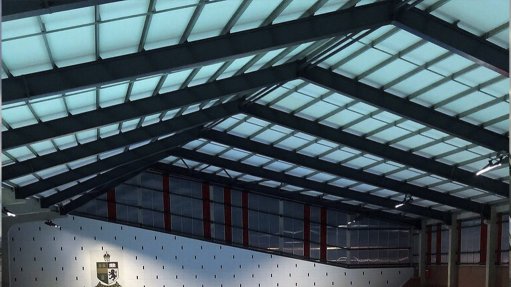
SMOOTH TRANSITION The institute is ready to assist companies with challenges facing industry
The Southern African Institute of Steel Construction (SAISC) is set to draw on its standards and frameworks to encourage its member companies to reuse steel to promote environmental sustainability, says SAISC technical director Amanuel Gebremeskel.
He mentions that the institute encourages collaboration with architects to reuse steel, using steel structures from an existing building in another one by careful use of design methods.
“We are seeing a big drive globally to use alternative, ‘green’ energy sources, including solar, wind, hydrogen and co-generation (the reuse of the heat that is already part of the existing process).
“In South Africa, some steel producers are now able to produce their own power on site using clean energy sources such as solar – rather than having to rely on grid power, which of course comes largely from the fossil fuel coal. This is an exciting development that has been recently enabled by legislative changes,” he says.
Further, in a quest to find methods of producing power that do not emit carbon dioxide as a polluting element, the SAISC recently did presentations in which it showcased ground-breaking strides being made by Swedish company SSAB, says SAISC CEO Paolo Trinchero.
“SSAB has pioneered a new approach to steel production that is leading the way to providing quality steel with zero carbon emissions. It aims to provide this to the market by 2026. SSAB calls this ‘fossil-free steel’, meaning that fossil fuel will stay in the ground where it belongs.
He adds that the advantage across the entire steel value-chain is that all parties become part of a fossil-free value chain and are collectively playing a role in reducing global greenhouse-gas emissions.”
Mini Mills in the Industry
Gebremeskel highlights that the institute has seen a positive shift in the industry towards sustainability and aims to educate its member clients about renewable energy and sustainability.
He mentions that the introduction of mini mills in the steel industry has been a great initiative to improve sustainability, in terms of the recycling of steel. He adds that the biggest shift is that the country now has more then ten mini mills that are operational, and recycling steel in South Africa.
“Recycling old cars and refrigerators affects how steel is produced. Rather than starting the physical and chemical processes of making steel through the extraction of iron-ore, which emits significant amounts of carbon dioxide into the atmosphere, these mini mills are recycling existing steel for future use using electric arc or induction furnaces, he says.
He adds that SAISC is open to assisting its members to successfully transition to making use of renewable energy.
“The institute is able to assist with their queries as we play a strong educational role, based on our 66 years of existence and our global affiliations with other similar industry bodies around the world – we are one of just six such institutes.”
SAISC marketing director Denise Sherman mentions that the institute helps educate member companies about production methods and sustainable practices.
“There are examples where we are able to assist with the necessary adherence to codes and standards for newer entrants to the steel value chain in particular. In this way, SAISC is able to be a part of the process of knowledge transfer. We cannot assume an understanding and awareness of the required knowledge if we have not shared it.”
She adds that the institute has been able to fulfil the role of being a “wise sage” to the steel industry value chain.
“From our creation of the written standards to which the industry adheres, through to the books and courses we produce, the events we facilitate, the talks and lectures that we present and of course our yearly Steel Awards, we are very active, and I believe that we offer excellent value to the local steel industry.
“Perhaps our greatest achievement lies in the fact that most people have no idea how comparatively small a body we are – our ongoing accomplishments appear to be those of a much larger team,” she remarks.